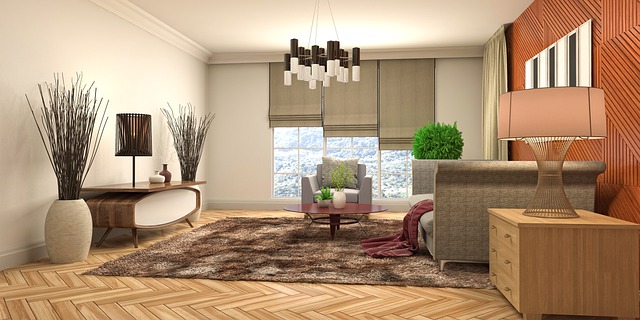Texture types and shading techniques are vital for realistic interior and exterior 3D renderings. Textures mimic real-world elements like wood grain or grass, while shading adds depth and lifelike reflections. Advanced algorithms create complex textures, accurately simulating material behavior under lighting, enhancing scene realism in both settings.
“Unleash the power of realistic visual effects in your 3D projects with detailed texturing and shading. This comprehensive guide explores the intricacies of creating immersive scenes, from understanding diverse texture types for accurate renderings to advanced shading techniques that add depth and dimension. Discover how to apply textures seamlessly to both interior and exterior surfaces, achieving photorealistic results. Dive into these strategies to elevate your 3D rendering skills.”
Understanding Texture Types for Realistic Renderings
Texture types play a pivotal role in achieving realistic renderings, be it for interior or exterior 3D scenarios. Different textures offer distinct visual characteristics, enhancing the overall authenticity of digital environments. For instance, rough stone textures add depth and realism to architectural interiors, while delicate fabric textures soften and warm up exterior landscapes. Understanding these variations is key to mastering 3D rendering.
In the realm of interior rendering, subtle wood grain or marble patterns can dramatically transform a space. Conversely, in exterior renderings, detailed mapping of natural elements like grass, leaves, or even water ripples becomes crucial for convincing visual storytelling. The right texture selection and application not only mimic reality but also evoke specific moods, making digital representations almost indistinguishable from the real world.
Shading Techniques to Add Depth and Dimension
Shading plays a pivotal role in bringing digital spaces to life, whether it’s for interior or exterior 3D rendering. Techniques like ambient occlusion simulate natural lighting by calculating how much light is blocked by surrounding objects, adding subtle depth and realism. For more dramatic effects, techniques such as ray tracing trace the path of individual light rays, resulting in incredibly lifelike reflections and shadows.
In 3D models, proper shading also considers material properties like reflectivity and diffuseness, allowing for a diverse range of visual appearances. By carefully manipulating these settings, artists can mimic different surface textures—from smooth glass to rough concrete—enhancing the overall realism of both interior and exterior scenes.
Applying Textures to Interior and Exterior Surfaces
In both interior and exterior 3D rendering, textures play a pivotal role in enhancing realism and immersing viewers in the digital environment. For interior spaces, applying textures involves selecting appropriate materials for walls, floors, and furniture to replicate real-world aesthetics. Techniques like procedural texturing and hand-painted shaders can add intricate details, from wood grain and marble veining to fabric patterns and metal finishes. Exteriors, on the other hand, demand consideration of environmental factors such as weather wear, age, and natural elements like moss or peeling paint, which contribute to a believable exterior look.
Whether creating photorealistic images or animated scenes, understanding how textures interact with lighting and shadows is crucial. Shading techniques, including diffuse, specular, and ambient lighting models, help simulate realistic reflections and diffusion on various surfaces, further enriching the visual experience in both interior and exterior 3D rendering.
Advanced Shading for Complex Material Simulations
Advanced shading techniques play a pivotal role in achieving realistic material simulations, especially for intricate interior and exterior 3D renderings. By employing sophisticated algorithms, artists can create complex textures that mimic real-world materials with remarkable accuracy. This involves understanding the interplay of light and surface properties, such as reflectivity, refraction, and absorption, to generate lifelike visual effects.
For instance, in interior rendering, advanced shading models can simulate the way light interacts with various surfaces—from glossy furniture finishes to textured walls and ceilings. Similarly, exterior scenes benefit from these techniques to replicate the behavior of different materials like glass, metal, or rough stone under varying lighting conditions, enhancing overall scene realism.
In the realm of interior and exterior 3D rendering, achieving realistic visual effects hinges on mastering detailed texturing and shading. By understanding various texture types, employing advanced shading techniques, and strategically applying textures to surfaces both internal and external, artists can create immersive digital environments. Continuous exploration of complex material simulations further enhances these effects, pushing the boundaries of what’s achievable in visual representation.
